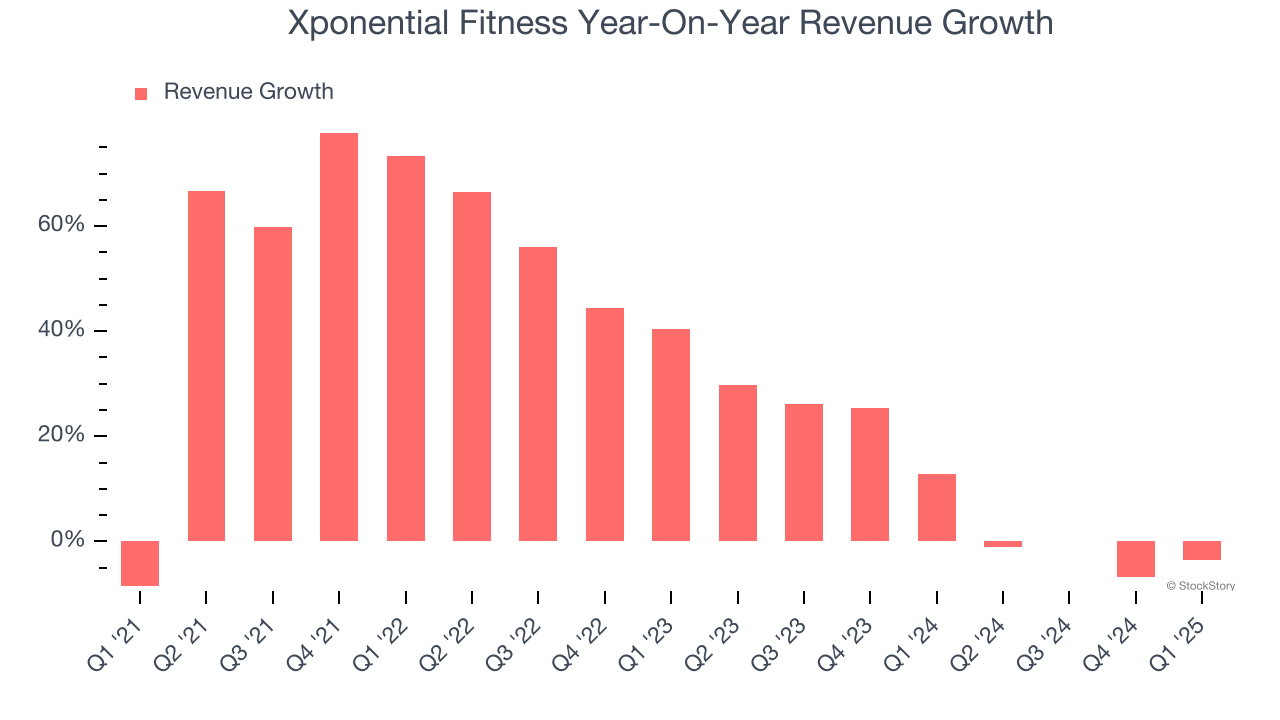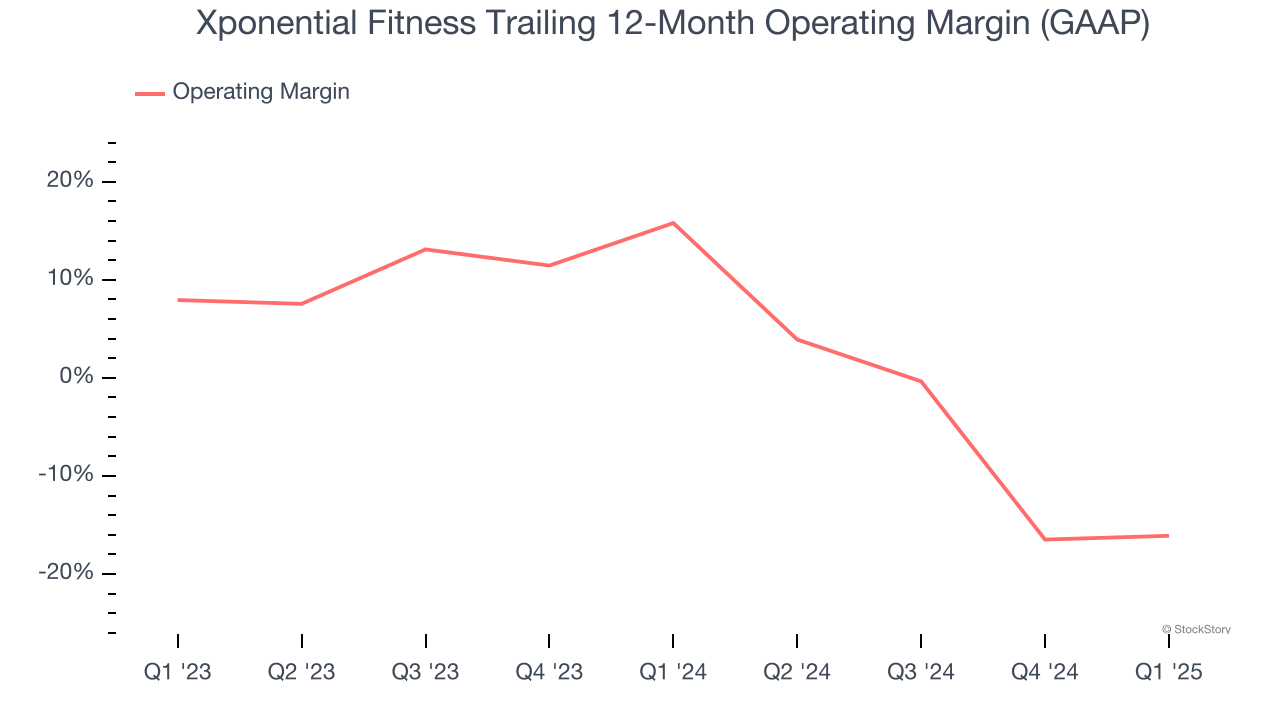
Shareholders of Xponential Fitness would probably like to forget the past six months even happened. The stock dropped 29.4% and now trades at $10.10. This may have investors wondering how to approach the situation.
Is there a buying opportunity in Xponential Fitness, or does it present a risk to your portfolio? Get the full breakdown from our expert analysts, it’s free.
Why Is Xponential Fitness Not Exciting?
Despite the more favorable entry price, we're swiping left on Xponential Fitness for now. Here are three reasons why you should be careful with XPOF and a stock we'd rather own.
1. Lackluster Revenue Growth
Long-term growth is the most important, but within consumer discretionary, product cycles are short and revenue can be hit-driven due to rapidly changing trends and consumer preferences. Xponential Fitness’s recent performance shows its demand has slowed significantly as its annualized revenue growth of 9.3% over the last two years was well below its four-year trend. Note that COVID hurt Xponential Fitness’s business in 2020 and part of 2021, and it bounced back in a big way thereafter. 
2. Breakeven Operating Margin Raises Questions
Operating margin is an important measure of profitability as it shows the portion of revenue left after accounting for all core expenses – everything from the cost of goods sold to advertising and wages. It’s also useful for comparing profitability across companies with different levels of debt and tax rates because it excludes interest and taxes.
Xponential Fitness’s operating margin has shrunk over the last 12 months, and it ended up breaking even over the last two years. Although this result isn’t good, the company’s elite historical revenue growth suggests it ramped up investments to capture market share. We’ll keep a close eye to see if this strategy pays off.

3. Previous Growth Initiatives Have Lost Money
Growth gives us insight into a company’s long-term potential, but how capital-efficient was that growth? A company’s ROIC explains this by showing how much operating profit it makes compared to the money it has raised (debt and equity).
Xponential Fitness’s five-year average ROIC was negative 31.4%, meaning management lost money while trying to expand the business. Its returns were among the worst in the consumer discretionary sector.
Final Judgment
Xponential Fitness isn’t a terrible business, but it isn’t one of our picks. Following the recent decline, the stock trades at 9× forward P/E (or $10.10 per share). While this valuation is optically cheap, the potential downside is big given its shaky fundamentals. We're fairly confident there are better investments elsewhere. We’d recommend looking at the most entrenched endpoint security platform on the market.
Stocks We Would Buy Instead of Xponential Fitness
The market surged in 2024 and reached record highs after Donald Trump’s presidential victory in November, but questions about new economic policies are adding much uncertainty for 2025.
While the crowd speculates what might happen next, we’re homing in on the companies that can succeed regardless of the political or macroeconomic environment. Put yourself in the driver’s seat and build a durable portfolio by checking out our Top 6 Stocks for this week. This is a curated list of our High Quality stocks that have generated a market-beating return of 183% over the last five years (as of March 31st 2025).
Stocks that made our list in 2020 include now familiar names such as Nvidia (+1,545% between March 2020 and March 2025) as well as under-the-radar businesses like the once-small-cap company Exlservice (+354% five-year return). Find your next big winner with StockStory today.
